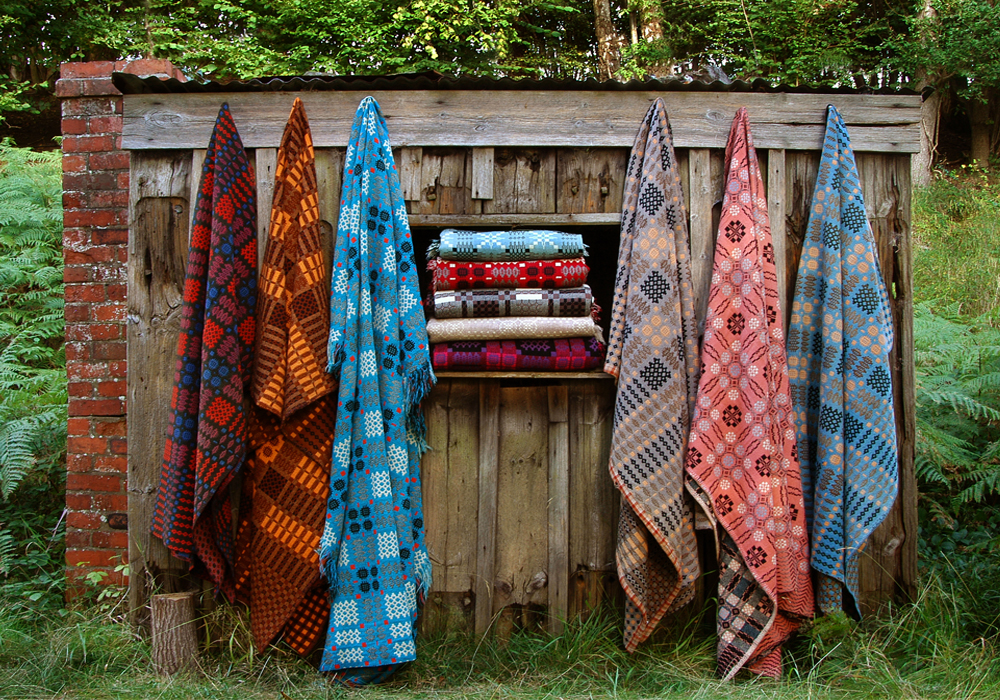
This week, Selvedge Magazine looks at Welsh Blankets and I’m warning you, you’re going to want one after you’ve read the post……
Wales’ rich community of designers and makers – both historic and contemporary – is often overlooked in comparison to those of its celtic cousins Ireland and Scotland. It is such a shame given the obvious value of Wales’ creative output, that when one sees a Welsh blanket or quilt (unless you’re fully clued up on traditional textiles) the first thought is ‘what a beautiful blanket’ rather than ‘what a beautiful Welsh blanket’. And yet we all know, aficionado or not, where a kilt, sporran or an Aran sweater hails from.
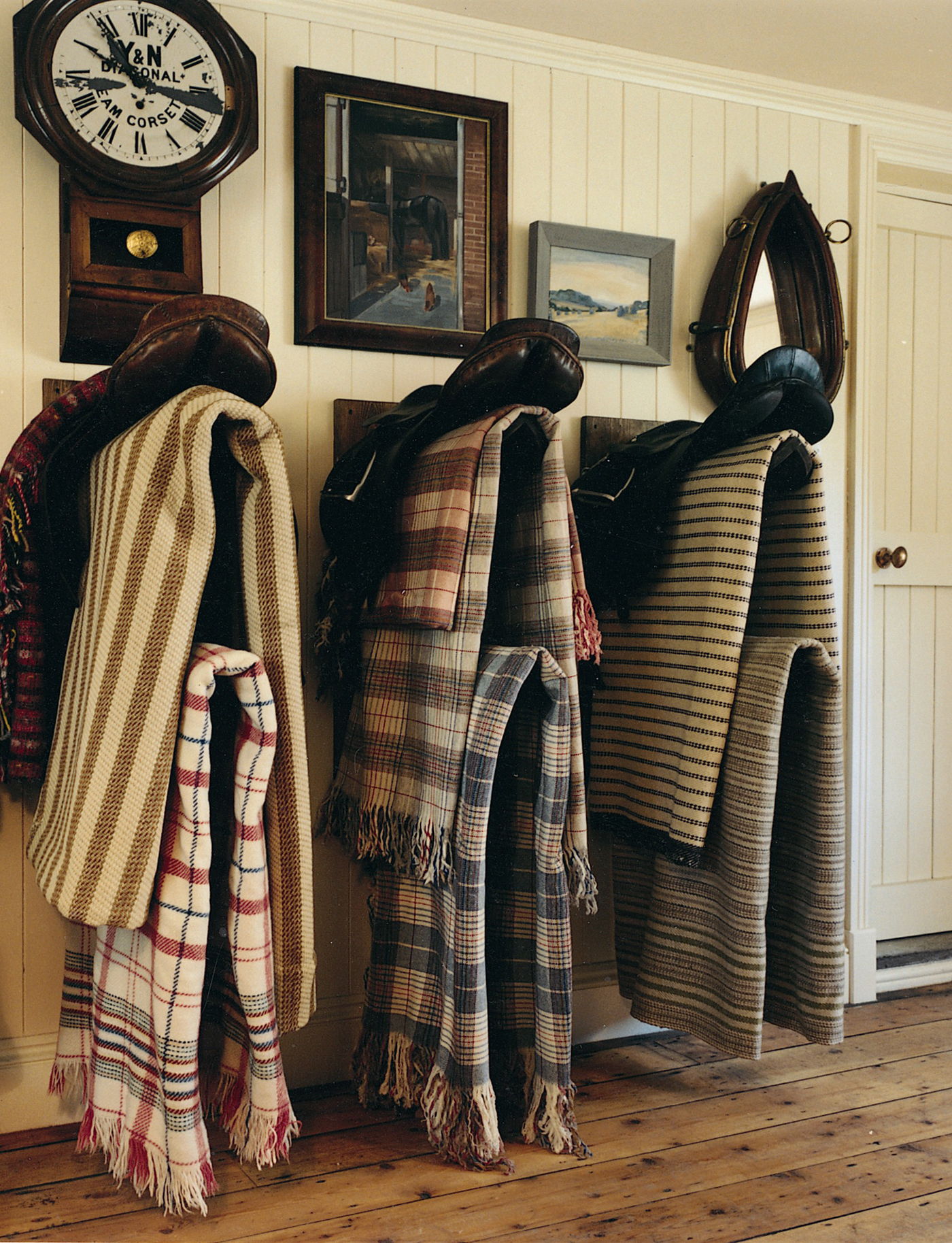
In particular the craft and history Welsh blankets has at times been almost completely forgotten. This is evidenced by Athene English’s quest to map out their heritage from practically nothing. Where blankets and quilts in America and Canada are all archived and recorded, no such care has been taken in the past in Wales. This prompted English to personally safeguard the blankets’ histories, languages and traditions. This painstaking and rather heroic investigation – which involved reading each and every little bit about the Welsh woolen industry – has thankfully been fruitful.
Through English, we know that blankets with a central seam are usually from before 1910 and woven on narrow looms. After this date government initiative relocated wider looms, discarded by the technologically expanding Yorkshire mills, to Wales. Determining a blanket’s specific place of origin, it turns out, is a process of observation, collecting snippets of information and combing the country systematically… always looking and asking, asking and looking.
English has since amassed her own impressive and properly catergorised collection (and become somewhat of an authority). Whilst the identities of the makers of antique Welsh blankets are largely lost, the styles, patterns, weights, feel and colours are all important and revealing qualities in an blanket.

It was towards the end of the 19th century that the blanket trade moved from hand weaving to the machine and in part insured their survival. This ultimately placed textile manufacture in Wales in a kind of metaphorical balance: between the resurrection of vulnerable skills and the rebranding of craft artefacts; between a sustainable business model and a fragile niche.
From her shop, The Great English Outdoors, English stocks blankets dating back to the 1870s – many of which are plaid and unfringed indicating that they came from poorer families while fringed examples, larger and softer, would have been more expensive. Today the blankets have lost their ‘grittiness’ and roughness of fleece of their antecedents; but they maintain the range, vigour of palette and tradition.
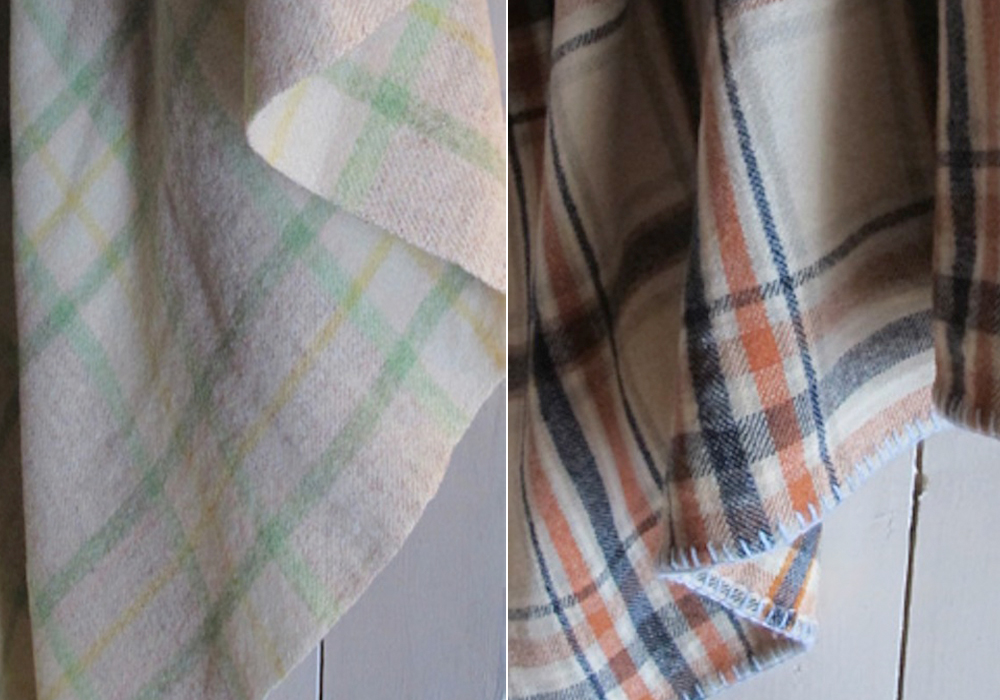
These everyday items were recognised as a record of the people too late: by letting that record disappear Wales lost a valuable part of its cultural heritage. They do however, still offer us a glimpse of the past, and to the cultural as well as the practical significance of the blanket: to cosset and protect, to guard against the cold, to celebrate.
If you’re interested in finding more designer makers who understand and appreciate the history and quality of textiles, why not visit Selvedge’s Artisan Christmas fair in Bath?


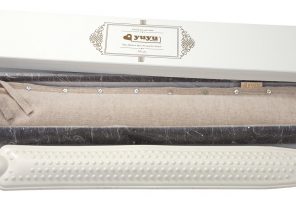
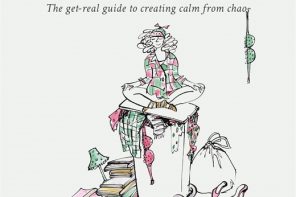

As an avid reader of both TWB and Selvedge Magazine, I’ve really enjoyed Polly’s Friday guest posts – thank you! And it’s lovely to see Athene English’s beautiful shop featured here. However, it does seem ironic that a blog on Welsh blankets mentions just one researcher/supplier – and who happens to be based in England (!) What about Jane Beck’s wonderful collection and shop, Ty Zinc, in Carmarthenshire, which is wholly dedicated to both the heritage and contemporary production of Welsh blankets? Jane works with local mills, such as Melin Teifi, to maintain traditional designs and skills. Her work has been recognised by the national archives for its historical importance.
Elsewhere, Melin Tregwynt, in Pembrokeshire, fuses both traditional patterns with contemporary designs, exporting across the world from a mill owned by the same family since 1912. And just down the road from where I live, Melin Trefriw on the River Conwy still makes timeless double cloth bed covers. There are more I could mention – not forgetting the work of National Wool Museum, near Newcastle Emlyn.
So, I don’t think it’s accurate to say that Wales has ‘lost this part of its cultural heritage’. that may be the view from London – and even from Hay on Wye – but dare I suggest that it might be worth crossing the border to find out a bit more?
As an avid reader of both TWB and Selvedge Magazine, I’ve really enjoyed Polly’s Friday guest posts – thank you! And it’s lovely to see Athene English’s beautiful shop featured here. However, it does seem ironic that a blog on Welsh blankets mentions just one researcher/supplier – and who happens to be based in England (!) What about Jane Beck’s wonderful collection and shop, Ty Zinc, in Carmarthenshire, which is wholly dedicated to both the heritage and contemporary production of Welsh blankets? Jane works with local mills, such as Melin Teifi, to maintain traditional designs and skills. Her work has been recognised by the national archives for its historical importance.
Elsewhere, Melin Tregwynt, in Pembrokeshire, fuses both traditional patterns with contemporary designs, exporting across the world from a mill owned by the same family since 1912. And just down the road from where I live, Melin Trefriw on the River Conwy still makes timeless double cloth bed covers. There are more I could mention – not forgetting the work of National Wool Museum, near Newcastle Emlyn.
So, I don’t think it’s accurate to say that Wales has ‘lost this part of its cultural heritage’. that may be the view from London – and even from Hay on Wye – but dare I suggest that it might be worth crossing the border to find out a bit more?
Apologies, clicked ‘post’ twice! We may have lovely blankets in Wales but the internet is c**p.
Helen xx
And of course Hay is across the border – just. My bad. It just feels so English with that Herefordshire postcode too. H x
Helen! Thank you very much indeed for this excellent rebuke, you are right, Wales does have some good stockists of blankets, some of which we have mentioned in past posts here on TWR, but who could resist pictures of a blanket-wearing pony? Ax
You’re absolutely right, Amanda: no one in their rights mind could resist a picture of a pony wearing a pile of Welsh blankets! And yes, TWR is a brilliant champion of local textile production – I remember your report from Solva Mill a couple of years ago, another wonderful place (do I recall a cat among the blankets?). H x
Thank you Helen. My thoughts exactly. A visit to our shop in Ceredigion will give a an interested audience an abridged stroll through over 200 years of history. The website welshblankets.co.uk has been part of the National Web archive since 2012 and is used for research by many many researchers including The National Library & British Museum. The history of makers is far from lost. Jane Beck
and if it helps ..we have a very cute dog!